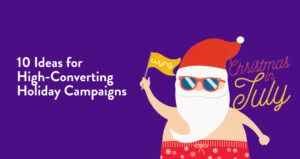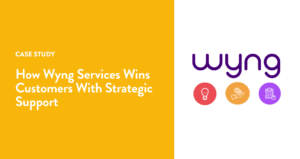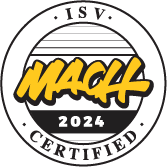83% of Americans say that a word-of-mouth recommendation from a friend or family member makes them more likely to purchase that product or service.1
The new normal, with millions of us spending more time online while sheltering at home, hasn’t changed the need for marketers to drive results — but it has led marketers to revisit their strategies, and test new ways to connect with customers online.
Referral programs — like a targeted Refer-a-Friend campaign, or an evergreen Friends & Family program — are a highly-effective way to drive acquisition (opt-ins) and incremental revenue ($).
Referrals work so well because they enable brands to tap into the trusted relationships that their customers have with friends and family. When a customer recommends a brand to a friend, their recommendation carries more weight than other forms of brand messaging — and it performs better as a result.
Today, Wyng is introducing Referral — a comprehensive set of features in the Wyng platform that enables brands to host their own bespoke Referral programs, and activate targeted segments with special Referral offers (e.g. for the most loyal customers).
Using Wyng, you can engage customers, loyalty members, and even social media influencers, and reward them for recommending your brand to their friends, family and followers.
Depending on your goals, you can structure your referral program to drive acquisition or sales:

Following is an overview of how you can use Wyng to power both types of referral programs for your brand.
1. REFERRALS → ACQUISITION (OPT-INS)
For referral programs designed to drive customer acquisition, create a microexperience with a signup form, and include an email address field (or mobile phone number), an opt-in checkbox, and a “referred by code” field (set up as a hidden field). In the Forms component settings, turn on “Referral Tracking.” Also add a Share component to your microexperience — either on the same page as the form, or on a separate “after form submission” page in the same microexperience.

To make it as easy as possible for people to share their “referred by link” with others, be sure to enable click-to-share buttons for Email, Facebook, Twitter, WhatsApp, Pinterest and LinkedIn in the Share component settings.
Wyng Metrics will automatically track and report who signs up as a result of a referral, so that you can reward people based on how many signups they drove.
The features and reporting are flexible, so it’s easy to develop special offers based on your brand’s goals — for example: an extra entry in a sweepstakes for each successful referral; or tiered rewards, depending on the number of referrals.
Pro Tip: You also have the option of giving people a unique “referred by code” to share with others. To enable “referred by codes,” turn on “Display Referral Tracking Code” in the Share component, and be sure the “referred by code” field is visible on the form so that the people being referred can type in the code.
2. REFERRALS → SALES ($)
For referral programs designed to drive sales on your e-commerce site, use Wyng to deliver unique, personal “referral codes” and/or “referral links” to your customers, loyalty members, or influencers — to share with their friends, family and followers.
Start by generating a list of unique, multi-use coupon codes (and corresponding links) for use on your e-commerce site, and then upload the list into a new code collection in Wyng. Note: when creating the new collection in Wyng choose “single use codes” — that way, each person who gets a code will get their own unique, personal code.
Then, using the Rewards component, create a microexperience to give your customers, loyalty members, or influencers a way to claim their own personal referral code/link to share with their networks.
The most common approach is to create a microexperience that describes the offer, and includes a single email address form field so the customer can claim their personal referral code/link — for example, “Refer a new customer and they’ll get 25% off their first purchase. After they’ve ordered, you’ll get 25% off your next purchase! Enter your email to get your own personal link to share.”
While less common, you also have the ability to limit who can get a referral code/link. One approach is to use the code validation feature in the Forms component to limit access to a list of eligible email addresses (or some other list of unique IDs, like mobile phone numbers). Another approach is to host the microexperience behind with your website login or as part of your loyalty program.
To identify and reward the people who successfully drive sales via their referrals, on a periodic basis, simply match the unique codes/links that have been redeemed with the people who originally claimed each code/link. For example, the reports in your e-commerce platform might show that 3 people redeemed the code “AB3A” when making a purchase on your site — and the reports in Wyng Metrics might show that code “AB3A” was claimed by jenny99@myemail.com. The reward can then be sent via email.
The features in the platform are flexible, making it easy to develop custom programs and special offers — e.g. “Refer 2 customers in a month, and get a $100 store credit! Repeat month after month if you like!”
For brands that need help with reward fulfillment, Wyng offers integration and add-on services options to fulfill rewards of any type: coupon codes, account credits, loyalty points, gift cards, promotions, and more.
To learn more about our Referral features and capabilities, contact the Wyng team!








